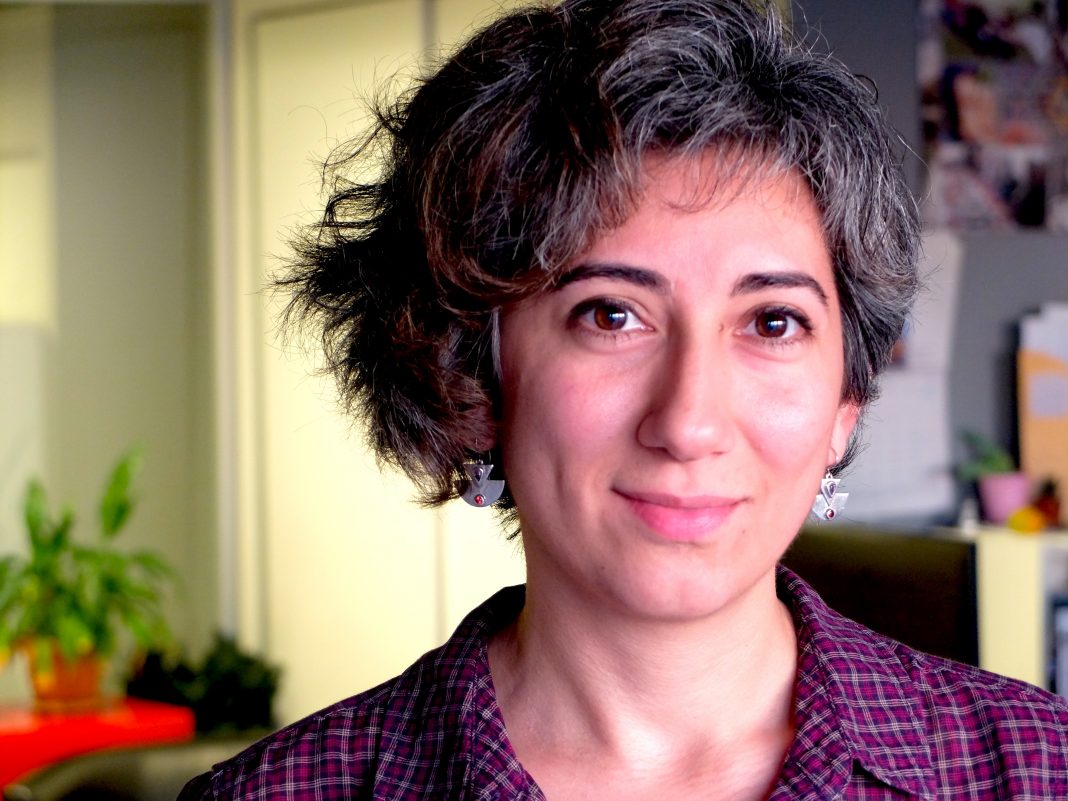Zeynep Güzel completed her cinema-television license at Bilgi University and her master’s degree in sociology at Boğaziçi University, Istanbul. She managed the Yeni Film Fund since its establishment and worked in many projects as a film instructor, screenwriter, director and production assistant and producer. Her first feature documentary “Come Rain Or Shine” was screened as part of the Istanbul Film Festival in April 2019. She was in Paris in November 2019 for screening of the documentary in Péniche Anako.
This interview was made in Paris in December 2019 by Ayşan Sönmez – a PhD student at Paris 8 University Geopolitics Institute.
You can watch the trailer of “Come Rain Or Shine” by clicking here.
Ayşan Sönmez: You have made a movie that is enjoyable to watch. I expected to see a more didactic or politically correct work, but I found it more poetic and authentic. I think this semi-documentary work came out after a trip, right?
Zeynep Güzel: The story of this movie started in 2008 when I made my first trip to Armenia. I had a serious curiosity and interest in Armenia. Because my grandmother’s mother is Armenian. My grandmother raised me so there is a connection about the past, which is transferred from women to women. I know that since my childhood my grandmother was from an Armenian family in Ankara, Turkey. But it was not enough for me just to know… I started to read about the history of Turkey with my friends during my 20s. My interest increased even more as I learned. Of course, Hrant Dink also has a share in this, his book, the articles he published in Agos newspaper…
It was 2008, Anadolu Kültür’s Armenia-Turkey Cinema Platform made its first call. It aimed to bring together cinema sector employees from both countries and to provide the conditions for joint productions between the two countries. It was open to everyone from videographers to directors to screenwriters… I was one of the first participants of this platform. During the Istanbul Film Festival, filmmakers from Armenia came to Istanbul. Then, we went to the Golden Apricot Film Festival in Yerevan. It was the first time that I saw Armenia and was very impressed. People’s gestures, facial expressions, clothes, postures are very reminiscent of where I came from, but they speak another language, but we are also close. These affected me very much. I can also say that the country visually attracts great interest in me. You also feel that you are in the former Soviet Union region, a quite different city order, different cars, traces of a different system…. First, I saw the pipes, a pipe system built on the ground…
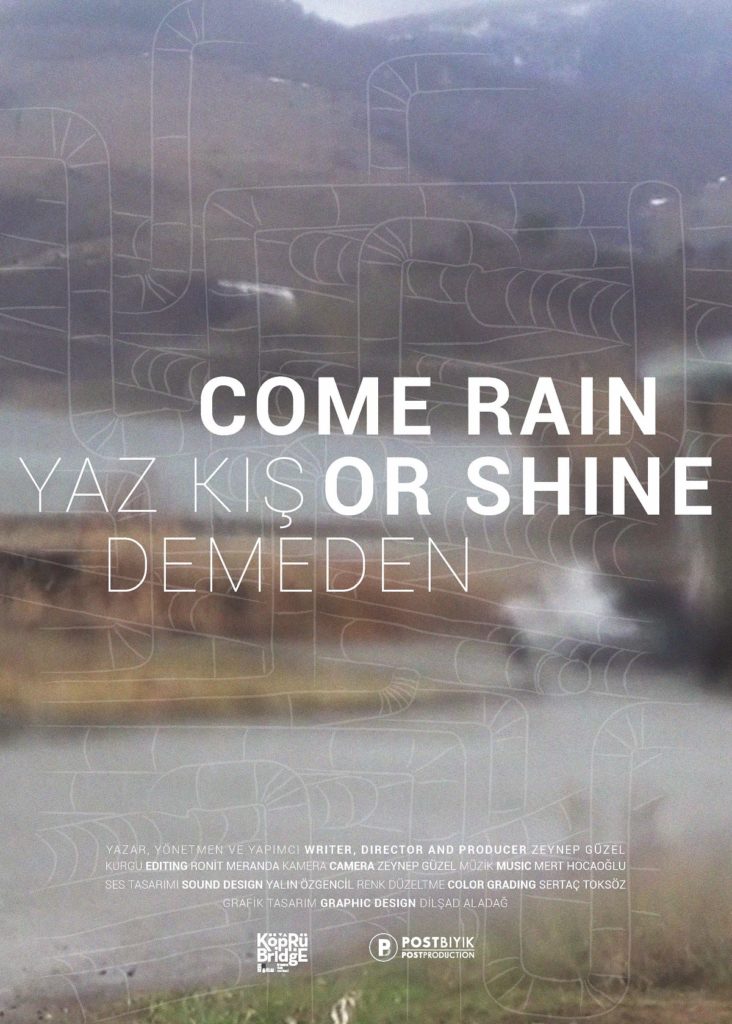
AS: The whole country is like that? A country weaved with pipes…
ZG: Yes, we see both in the city and in the villages, and we see these pipes on the highways, they are always outside. Pipes welcome and follow you everywhere.
AS: Natural gas pipes, right?
ZG: Mostly. I saw such pipe systems in Romania too, the pipes were standing outside like this here. These made me visually curious. What I did was try to dig deeper into a visual landscape that affected me, both in terms of my inner journey and the history of the cities. Behind them I came an infrastructure problem, a heating problem, and an energy crisis through the country. I started to learn that the energy supply in the region was interrupted for a while, and I learnt the reasons for it. Karabakh war, the borders with Turkey and Azerbaijan are closed… These all contributed to the emerging economic problems. On top of these, there was the Gyumri (Spitak) earthquake in 1988. The earthquake had an impact on the entire country as the nuclear power plant was damaged and because the country’s surface area is small. In fact, that power plant had undertaken most of the energy production. They had to stop energy production for safety reasons after the earthquake. As such, the country was buried in the darkness for 4 years. Electricity was given just for several hours a day. “We went back 100 years, we returned to basic village life,” they say. There is a country that declared its independence from the Soviet system in the 1991 period, it is a new country and it is being established with such deep problems. These questions emerged from our conversations with the people I interviewed while questioning the pipes I saw everywhere. I started to tour the old industrial cities one by one. In Soviet Armenia, as in most of the Soviet Union, there is a factory-city structure. In this way, building a city-as-project concept is very common.
AS: A factory is established according to a specific need and a settlement is formed around it?
ZG: Yes, during 50’s, such projects were created based on the specific needs. A small place was chosen as a settlement and certain branches of industry were channeled into this area. Accordingly, housing, hospital and school projects were carried out around it. Public utility was established based on this project. This was operated as a city model. Because they were centralized in the Soviet system, similar cities were all interconnected. Production was linked as well. If a particular city produces a particular product, a by-product of this product is produced in another city outside the borders of current Armenia. These products are then brought together in another production process in another project city. Many cities are organized like this. The cities of Hrazdan and Vanadzor, where my film takes place, are cities built according to this model. You can see how this city model, which works well with (then underground) the pipe system, destroyed by the energy crisis, economic and political and infrastructure problems.
AS: What was the production of the factories in the cities of Hrazdan and Vanadzor?
ZG: They were producing various things. In Vanadzor, there were mostly chemical production and chemical research. In Hrazdan, it was different. These cities were industrial cities operating efficiently during the Soviet system. When the Soviet system collapsed, they could not continue with the same production model. The countries declared their independence, governance models changed, and factories were disconnected from each other. Sometimes, the requirement for production itself disappeared. Factories were getting smaller or closed completely. There is a generation who spends a certain part of her/his life working at the factory, living the social life around it, and establishing their families there. Then, people left in the middle after these factories were downsized or closed completely. It is common to go abroad as a worker to make a living. As I traveled around the cities, I started to be interested in these life stories, and made discussions on such issues. I interviewed 10-15 people working in different fields in various cities of Armenia and listened to the workers’ stories in these factories. Then, considering the visual aspect, I decided to go with the cities of Hrazdan and Vanadzor. I decided to put these cities in the center of the film through two people I met on the way – Ashot and Karine. Ultimately, going from Turkey to Armenia also has a weight, has a big meaning. Despite this, they talked to me without any political bias, they told me what was going on. I felt at home.
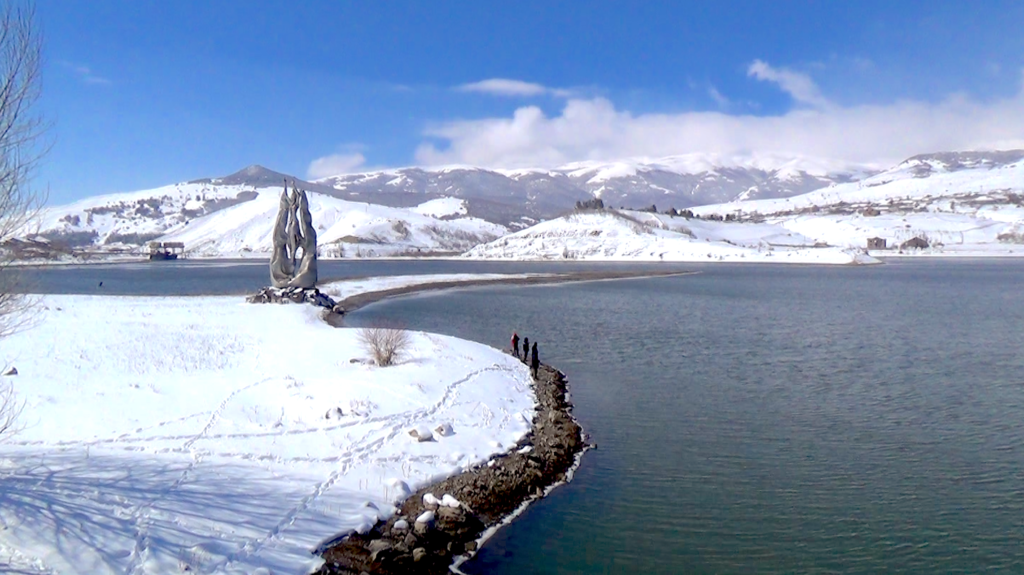
AS: You followed the water as well as the pipes.
ZG: Indeed. When you follow the pipes and water, you reach people. It happened like that. I met Ashot while I was watching people fishing. We met Karine on the shore of the artificial lake, at a place where we said to take a break, drink a tea, by the water. They are both fighters, skillful in surviving, mature people in the face of life. They do not have a nostalgic approach to the Soviet system when considering the current problems. People who make realist assessments. They both worked in the factory and lived around it until their late 30s. Then, when the system changed, they lost their jobs, worked in harder jobs, and started working in the other countries. Most people continue to work in other countries as immigrant workers. These cities are empty. There are very few youth and children. There are qualified people but no job.
Then I decided to tell my story in parallel with the stories of these two people. While I was telling the story of these two people, I wanted to tell mine. I identified the pipes in this country with roots and I thought I was following my own origins by tracing the pipes. Tree root, plant root, soil… Capillaries that make us… I said, “If I can bring them together at such an associative level, this movie will be finished.” “Okay,” I said, “I’m not making a film about Armenians of Turkey, about the pain and violence of the past, I do not make a movie about past traumas that passed me, but there it real, and there.” It is my reality, and this is the underlying reason why I get up and go to this country and be impressed, despite everything. Then I thought how I could transfer may past and my family history. I started writing texts for this. Those writings turned into poetry. I decided to go to Ankara, Turkey too. I said, “This movie will end in Ankara.”; in the town that is no longer exist. I decided to finish the movie in the town where my grandmother’s mother lived. I wanted to capture those who are no longer there. There are no people, but trees, earth, everything is there and I am. So, we still exist, we are here.
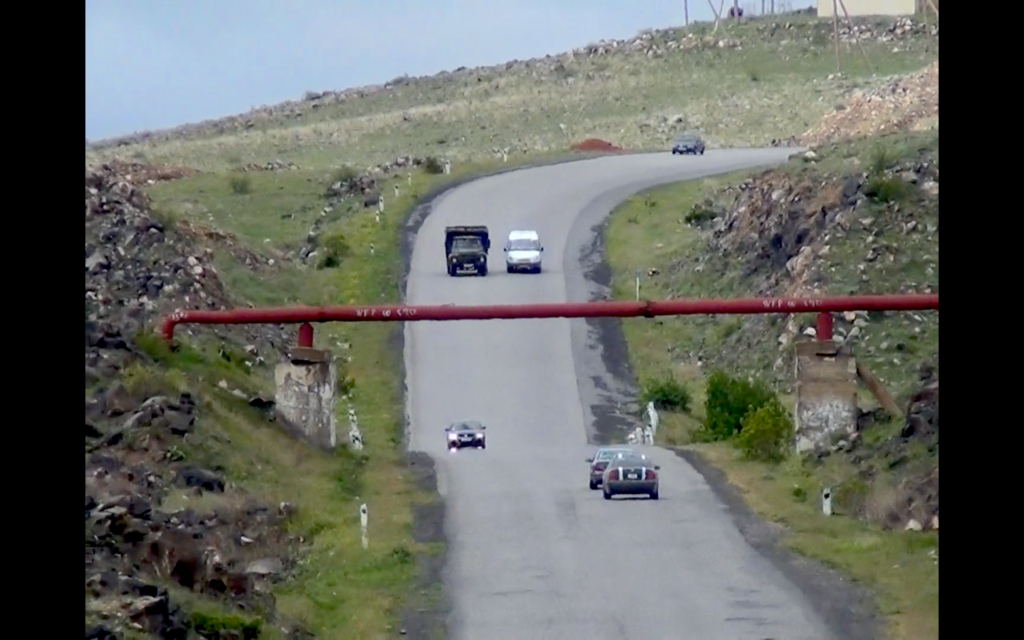
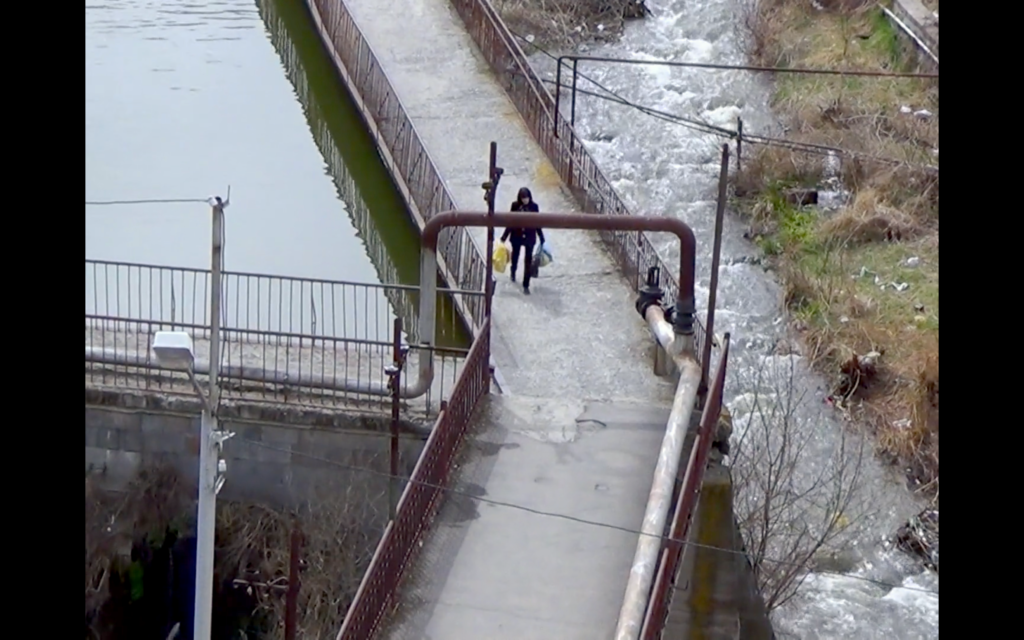
AS: Searching for family origins has become very popular. Especially in the last 10-15 years, everyone began to seek the origin of their family in some other region. It is likely to be related to globalization, increased possibilities of travel and access to information, or related those popular DNA tests. We are a hybrid country. This quest, therefore, a common point for people in Turkey. For example, you can see the same quest for those who wants to go Komotini of Greece, to his grandfather’s homeland. However, Komotini does not sound much because it is in the Balkans. And right now, there is no crisis like “Balkan crisis” in the political agenda of world politics as well as of Turkey. But Armenia and Armenian issue is a hot topic in the local, regional, international politics, and the tension of any kind of politics.
ZG: Yes it is. I think there is a situation like this. What we call as “memory” is something that is also carried through genetics, emotions and life experience of those people who have made us. There is a history brought by the new generations. We are in a country that has experienced great tragedies in a not too distant past. We are in a country where people migrated from/to many countries due to wars. We are people who have experienced great displacements. We are talking about people who have left all their existence and had to migrate or came to this country as migrants. Now, where’s all their memory gone? When you don’t talk about what happened, those ones don’t disappear. It is transferred to new generations even if you choose not to speak on them.
AS: Those are transmitted through behaviors… Not consuming certain foods, eating bread to its breadcrumbs, etc… Grandchildren carry certain codes, but they do not know their political and historical context.
ZG: I tried to make my movie on this. I am interested in signs of trauma or roots that have taken place in our daily lives now. Our past is here with us. I tried to give it with the use of sound in my film. Sounds from the distance, ringtones, echoes … I see this as the traces of time traveling and reaching us. Whatever it is to eat bread to its breadcrumbs, these sounds are the same. There is something, we see it in front of our eyes, but it is not clear.
AS: Because the glasses are foggy … You shot in the film either from the glasses blurred by the rain or from the foggy glasses …
ZG: Exactly. I tried to convey an experience in this film, so I tried to take advantage of everything. What we call experience is not only experienced in words. It is something more intense. Voices, images, all intertwined. “Can I make a film like this?” I said. This film was my first attempt in this direction. After that, I will try to do such things in different ways. To put forward an experience on a subject in the most honest and deepest way, primarily to myself. I invite people to something difficult. Put aside a didactic narrative that will guide you, go on a journey with me, wherever these connotations take you. Of course, I don’t just want to create ambiguity, of course there is a feeling and a thought that I want to reach at the end of the job, and I carry. I think I can give it in my film. I want the audience to let go while watching the film. Then we can describe certain experiences without only reducing pain, without being one-dimensional, and considering all possible emotions and situations, funny to tragic. In this way, we can describe a painful situation with a complex mood.
ALSO SEE: TURKISH FILMMAKER ZEYNEP GÜZEL IN SEARCH OF HER FAMILY ROOTS
Share the post « Interview with Zeynep Güzel: “Come Rain or Shine” or the Inspiring Resilience of Ordinary People »

